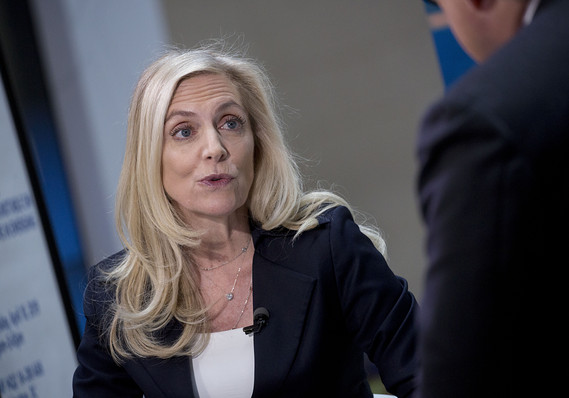 Bloomberg News/Landov
Bloomberg News/Landov
Federal Reserve Governor Lael Brainard on Wednesday became the second U.S. central banker to talk about the possibility of targeting longer-term interest rates as a “new” tool to combat the next recession.
It’s actually not so new. The last time the Fed conducted such a policy was during World War II to keep down the costs of funding the war.
The concept is relatively simple. If the Fed’s benchmark interest rate fell to zero and the two-year Treasury yield was at 2%, the Fed could announce it intends to use its balance sheet to peg the 2-year TMUBMUSD02Y, +0.36% rate at 1%. The general idea is that lower long-term rates spur activity.
Fed Vice Chairman Richard Clarida floated the idea in a speech earlier this year, and has done research on its use in Japan.
In past downturns, the Fed was often able to slash short-term interest rates by an average 5 percentage points to combat recessions. But the Fed’s benchmark federal funds rate now sits in a range of 2.25%-2.5%, limiting the firepower of its main policy rate.
As a result, Fed officials are casting about for new strategies that could pull the economy out of a ditch if necessary.
During the last recession, the Fed turned to so-called “quantitative easing,” the buying of trillion of Treasurys and mortgage-related securities to lower long-term rates.
QE was never popular and exposed the central bank to fierce criticism from congressional Republicans.
And now, Ken Rogoff, a leading monetary policy expert at Harvard University, said academics have largely concluded that QE was not even a very effective tool to spur growth.
Brainard said Wednesday she “would like to hear more” about targeting long-term rates.
“Once the short-term interest rates we traditionally target have hit zero, we might turn to targeting slightly longer-term interest rates—initially one-year interest rates, for example, and if more stimulus is needed, perhaps moving out the curve to two-year rates,” Brainard said.
“Under this policy, the Fed would stand ready to use its balance sheet to hit the targeted interest rate, but unlike the asset purchases that were undertaken in the recent recession, there would be no specific commitments with regard to purchases of Treasury securities,” she added.
Under the program to target longer-term rates, the Fed might be able to achieve its objective without acquiring many securities at all, if its program is credible, said former Fed Chairman Ben Bernanke, in a blog post.
Academics see some momentum building behind the idea.
Fed officials are set to meet with experts and academics to discuss new ways to fight recessions and also a possible change to the central bank’s 2% inflation target framework, at a conference in Chicago in early June.





